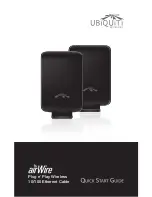
LANCOM Wireless DSL – LANCOM Wireless ADSL
Chapter 1: Introduction
10
EN
ephone line distance used permits considerably higher transfer rates than
would be possible when relying solely on the telephone network.
All DSL technologies, of which ADSL is the most common, are based on this
concept. Thanks to their high transfer speeds, DSL connections are well-suited
for Internet access.
Ideal for Internet surfers
The ADSL version of DSL was designed for applications in which the user
receives high volumes of data but only transmits relatively small volumes. A
typical example for this would be access to the world wide web (www). Only
a few commands (mouse clicks) are required to initiate the download of very
large volumes of data such as graphics, texts, audio or video files. The user
typically only sends very small amounts of data across the Internet connec-
tion.
With an ADSL connection, a user can download at up to 8 Mbps (“down-
stream”) and upload at up to 800 Kbps (“upstream”). These maximum rates
can be reduced as required by the ADSL provider. A typical access plan might
specify, for example, 768 Kbps download and 128 Kbps upload speed.
All services via a single cable—thanks to the splitter
With ADSL, all traditional telephony applications (telephone, fax, answering
machine, PBX) can still be used without restrictions. So-called splitters make
this possible. Splitters are devices that separate the telephone line's “voice
frequencies” from the “data frequencies” and ensure that the signals are for-
warded to the appropriate networks. Voice signals are passed on to the exist-
ing telephone network, while data signals are forwarded to their destinations
(i.e. Internet providers) via high-bandwidth network connections.
ADSL connection via
telephone line
Internet
Local exchange (central office)
LANCOM Wireless DSL
LAN











































